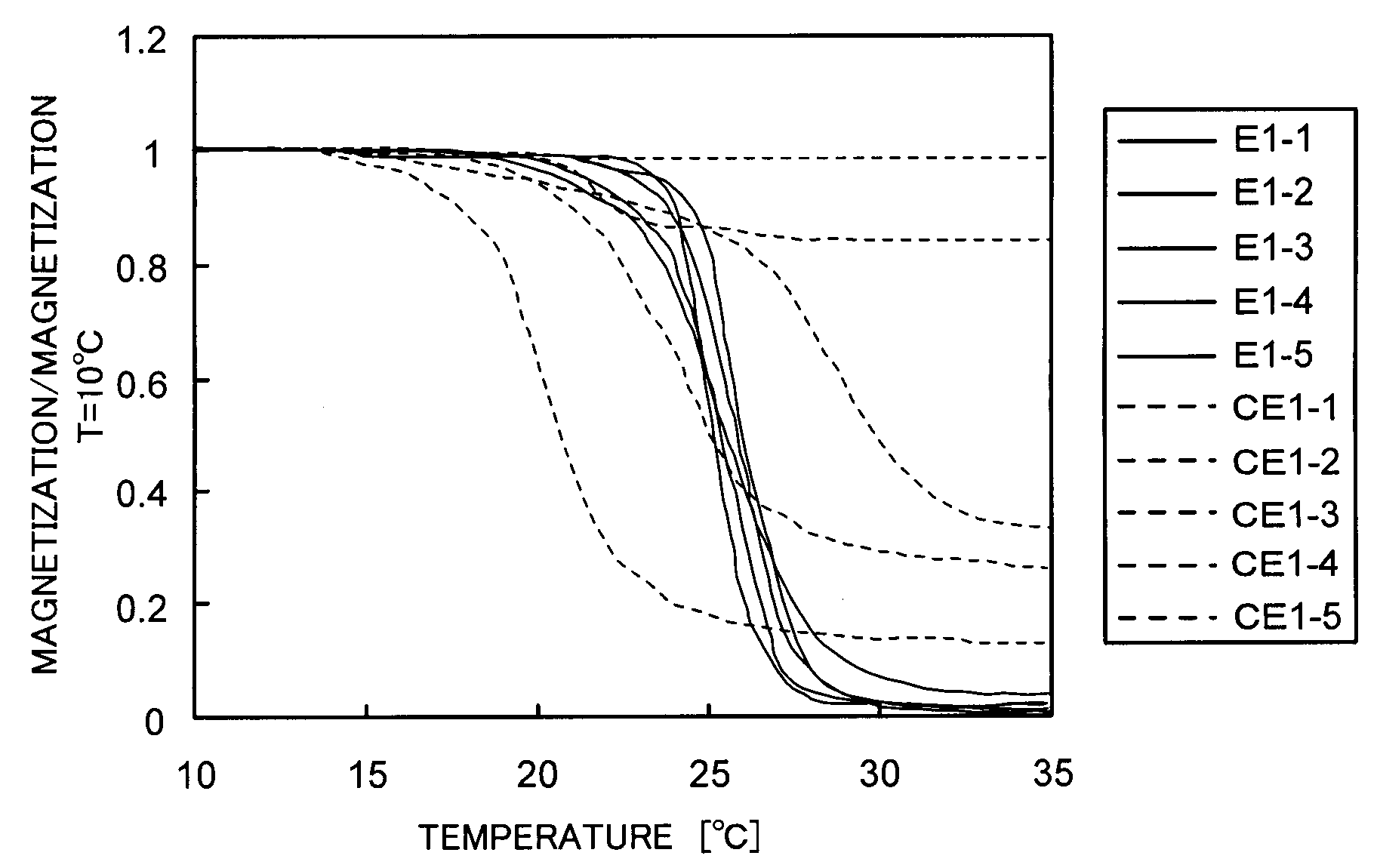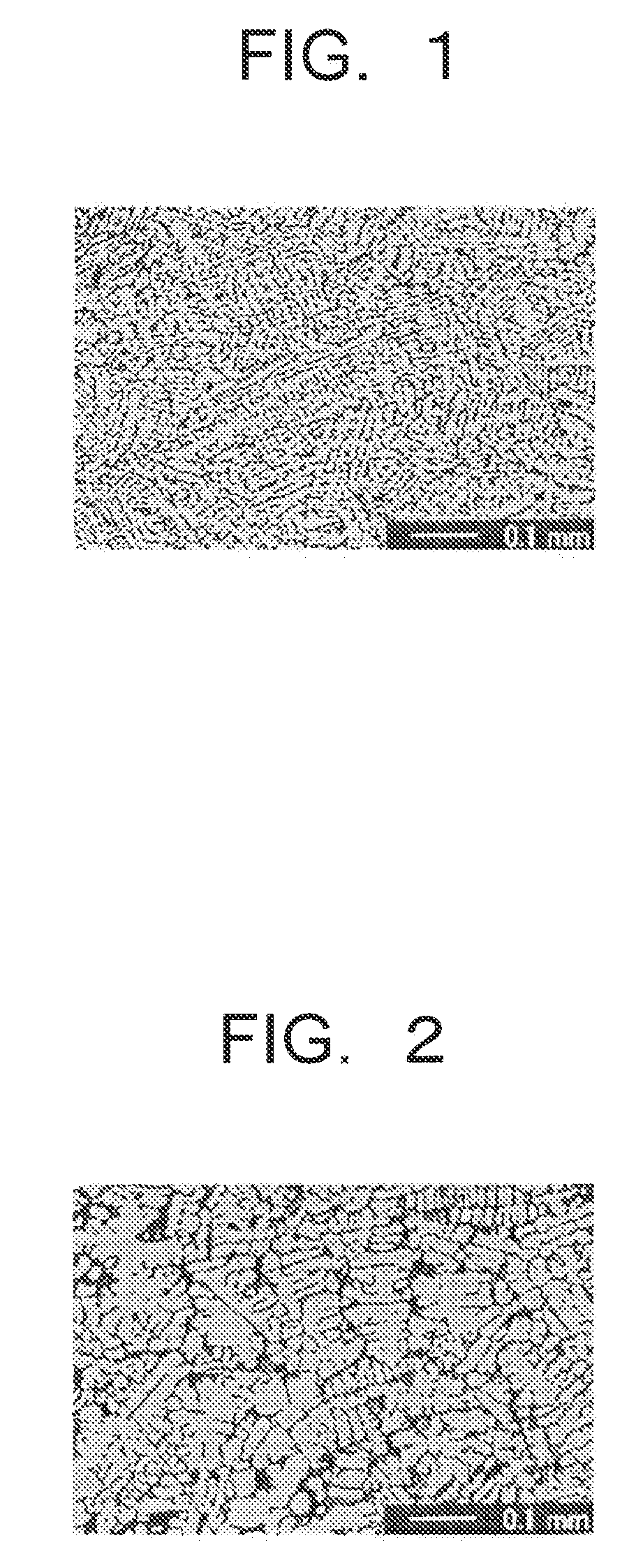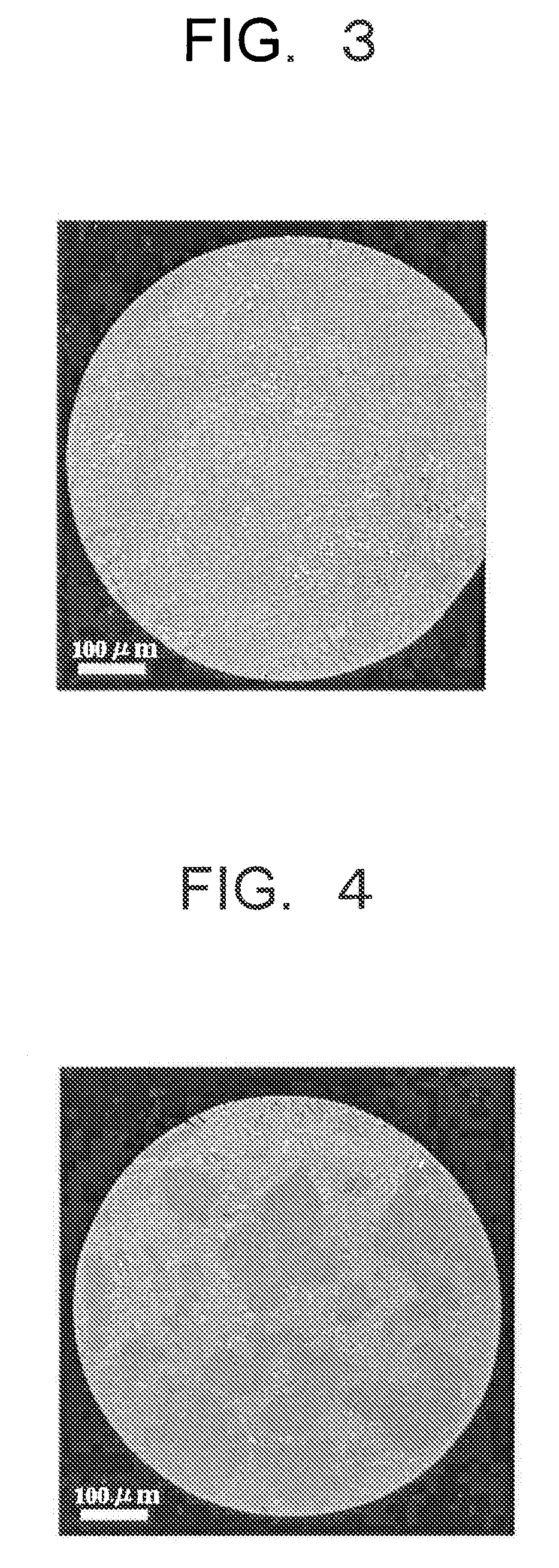Alloy and method for producing magnetic refrigeration material particles using same
a technology of magnetic refrigeration material and alloy, which is applied in the direction of heat treatment apparatus, magnetic bodies, furnaces, etc., can solve the problems of poor practical utility, unconsidered uniformity of the properties of the particles obtained by fabricating into the spherical particles, and the ribbon-like magnetic refrigeration material
- Summary
- Abstract
- Description
- Claims
- Application Information
AI Technical Summary
Benefits of technology
Problems solved by technology
Method used
Image
Examples
examples 7 to 10
[0077]Cylindrical mother alloys were produced in the same manner as in Example 1 excepting that the compositions shown in Table 2 were applied. The individual mother alloys of Examples 7 to 10 were confirmed to have the Fe alloy phases having the bcc crystal structure as the main phase. The mother alloys were used to produce spherical particles in the same manner as in Example 1, and the heat treatment was performed under the nearly same conditions (about 980 to 1080° C.) as in Example 1. The magnitudes ΔT were measured with the ambient temperatures of the individual spherical particles changed. Maximum values (ΔTmax) of ΔT are shown in Table 2.
TABLE 2Alloy composition (atomic %)LaCePrFeCoMnNiAlSiBΔTmaxE76.450.7—76.147.43———8.350.931.7CE96.450.7—76.147.43———9.28—0.5E86.94—0.274.279.3—0.93—7.430.931.4CE106.94—0.274.279.3—1.86—7.43—0.4E97.15——74.297.890.930.93—7.431.381.3CE117.15——74.287.890.930.93—8.82—0.6E107.15——74.297.89——9.29—1.381.3CE127.15——74.279.29——9.29——0.3E = Example,CE = ...
PUM
| Property | Measurement | Unit |
|---|---|---|
| grain diameter | aaaaa | aaaaa |
| length | aaaaa | aaaaa |
| diameter | aaaaa | aaaaa |
Abstract
Description
Claims
Application Information
 Login to View More
Login to View More - R&D
- Intellectual Property
- Life Sciences
- Materials
- Tech Scout
- Unparalleled Data Quality
- Higher Quality Content
- 60% Fewer Hallucinations
Browse by: Latest US Patents, China's latest patents, Technical Efficacy Thesaurus, Application Domain, Technology Topic, Popular Technical Reports.
© 2025 PatSnap. All rights reserved.Legal|Privacy policy|Modern Slavery Act Transparency Statement|Sitemap|About US| Contact US: help@patsnap.com



